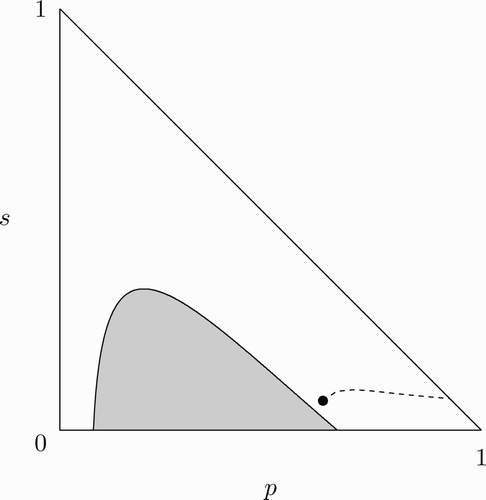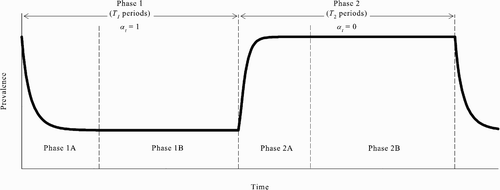Figures & data
Figure 1. The benefit and cost of vaccination as functions of the steady-state prevalence. The parameter values used are: β=1, δ=0.07, ϵ=0.8, u=100, and c=338. With the given parameter values, and p=0.62. The solutions to the equation B(p)=c are 0.78 and 0.036. Since there does not exist a solution to EquationEquations (9)
–Equation(11)
satisfying p=0.036 and α∈[0, 1], there cannot be an SSREE in which p=0.036. On the other hand, we obtain α=0.48∈[0, 1] from solving EquationEquations (9)
–Equation(11)
given p=0.78. Therefore there exists an SSREE with (α, p)=(0.48, 0.78).
![Figure 1. The benefit and cost of vaccination as functions of the steady-state prevalence. The parameter values used are: β=1, δ=0.07, ϵ=0.8, u=100, and c=338. With the given parameter values, and p=0.62. The solutions to the equation B(p)=c are 0.78 and 0.036. Since there does not exist a solution to EquationEquations (9)–Equation(11) satisfying p=0.036 and α∈[0, 1], there cannot be an SSREE in which p=0.036. On the other hand, we obtain α=0.48∈[0, 1] from solving EquationEquations (9)–Equation(11) given p=0.78. Therefore there exists an SSREE with (α, p)=(0.48, 0.78).](/cms/asset/6d731ecb-b76f-4782-aa1a-ccd9108767af/tjbd_a_334591_o_f0001g.gif)
Figure 2. The coexistence of multiple REEs starting with the same initial prevalence level. The parameter values used are: β=1, δ=0.07, ϵ=0.8, u=100, and c=338. Given initial prevalence p
0=0.7 (and v
0=0), there exists an REE in which α
t
=0 ∀ t and p
t
converges to ; there also exists an REE in which α
t
=1 ∀ t and p
t
converges to p=0.62.
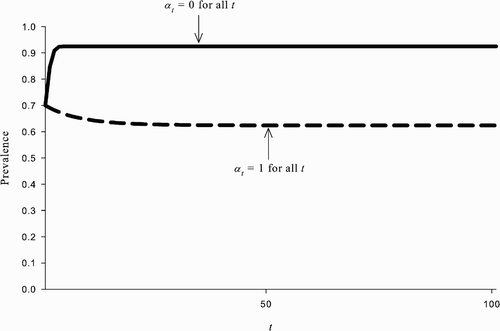
Figure 3. Assuming the population is initially at the no-vaccination steady state, there can exist an REE in which susceptible agents’ behaviour changes starting at time T and the population eventually reaches the all-vaccinate steady state.
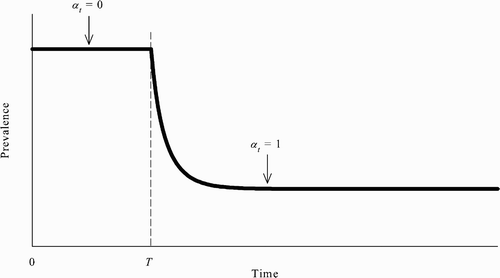
Figure 4. The net cost of vaccination at time t<T given and α
t
=1 ∀ t≥T. The plot shows U*(p
t
)−(W*(p
t
)−c), t<T, where W* and U*, respectively, satisfy EquationEquations (29)
and Equation(30)
, as a function of T−t. The parameter values used are: β=1, δ=0.07, ϵ=0.8, u=100, and c=338.
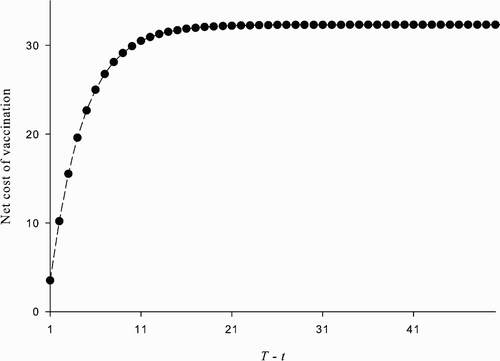
Figure 5. Assuming the population is initially at the all-vaccinate steady state, there can exist an REE in which susceptible agents’ behaviour changes starting at time T and the population eventually reaches the no-vaccination steady state.
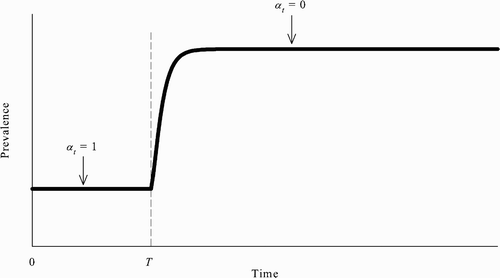
Figure 6. The net benefit of vaccination at time t<T given p
t
=p ∀ t≤T and α
t
=0 ∀ t≥T. The plot shows , t<T, where
satisfies EquationEquation (39)
, as a function of T−t. The parameter values used are: β=1, δ=0.07, ϵ=0.8, u=100, and c=338.

Figure 8. A plot of (solid line) and
(dashed line) with respect to p, where
and
, respectively, solve EquationEquations (43)
and Equation(44)
. The parameter values used are: β=1, δ=0.07, ϵ=0.8, u=100, and c=338.
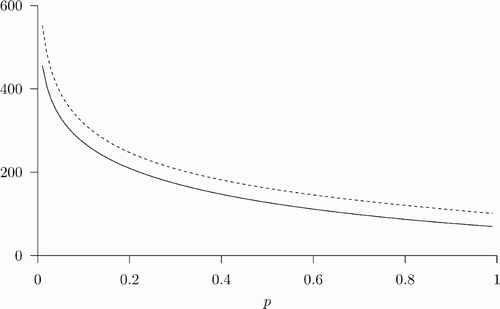
Figure 9. A plot of W (p)−c (solid line) and u+(1−δ) (1−β p) U (f(p)) (dashed line) with respect to p, where W solves EquationEquation (49) and U satisfies EquationEquation (50)
. The parameter values used are: β=1, δ=0.07, ϵ=0.8, u=100, and c=338. The two curves cross when p=0.0513 and p=0.973.
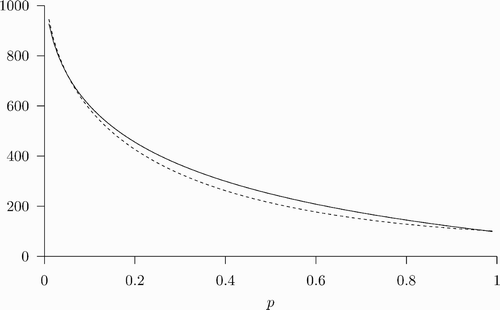
Figure 10. A comparison of U* *(p, s) and W* *(p, s)−c. The set of (p, s) such that U* *(p, s)>W* *(p, s)−c is indicated by the unshaded region, while the shaded region is the set of (p, s) at which U* *(p, s)≤W* *(p, s)−c. The point (p, s)=(p, δ) is indicated by the black dot. The parameter values used are: β=1, δ=0.07, ϵ=0.8, u=100, and c=338.
